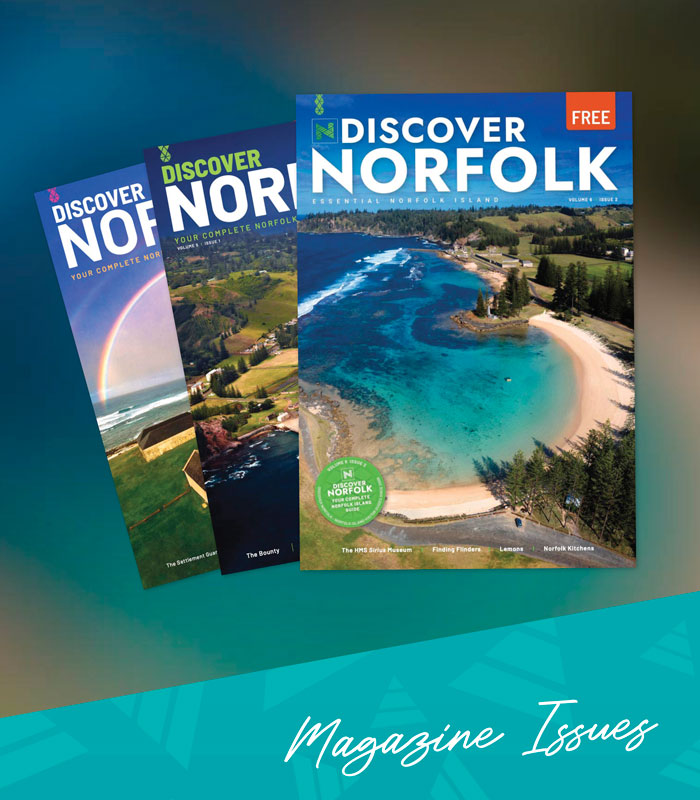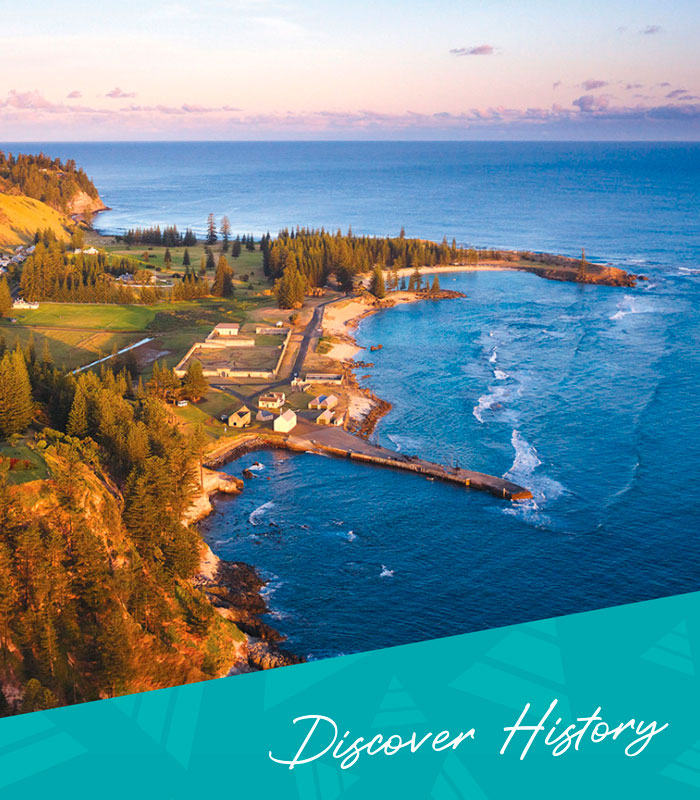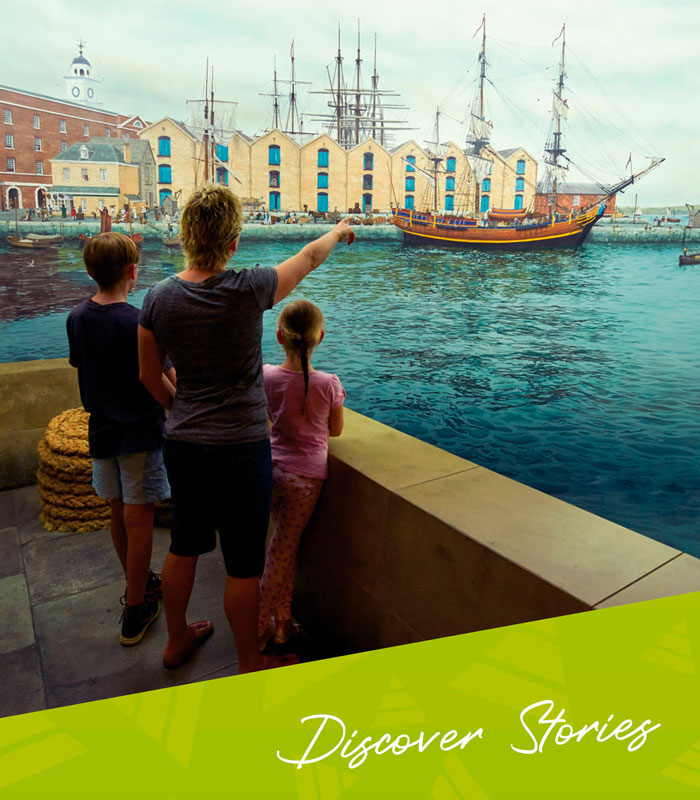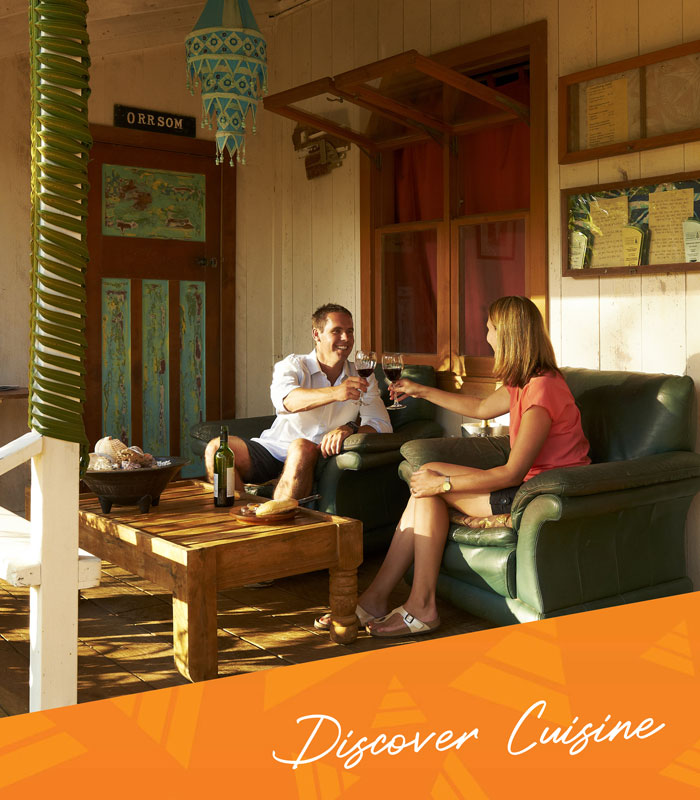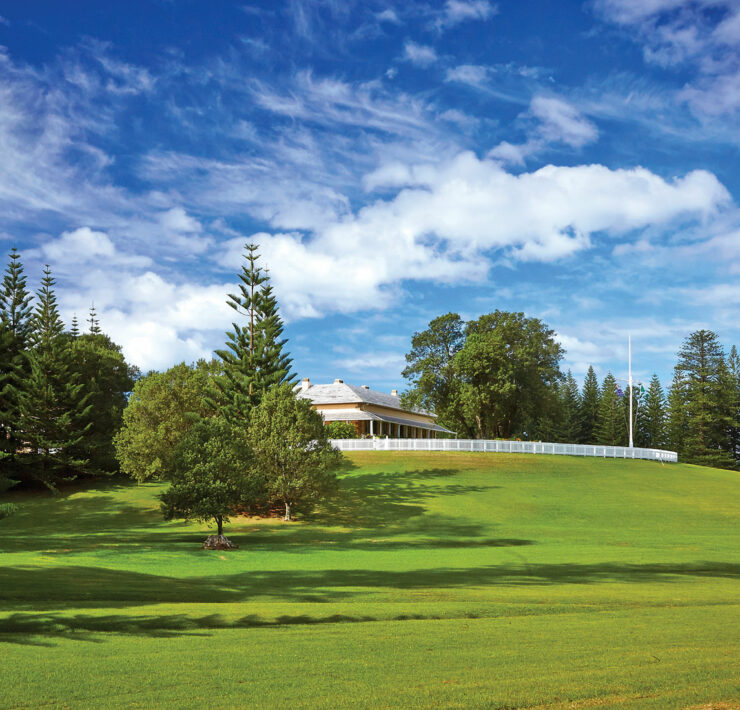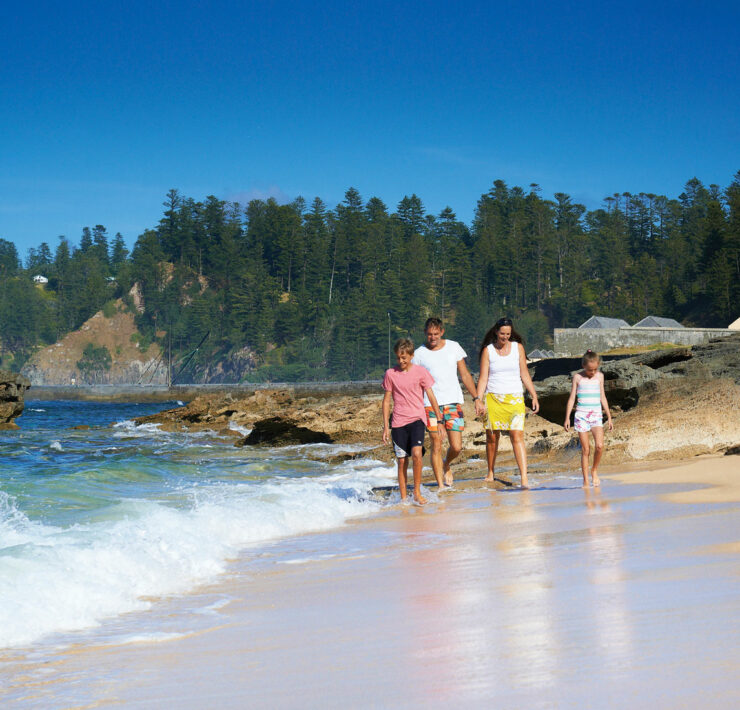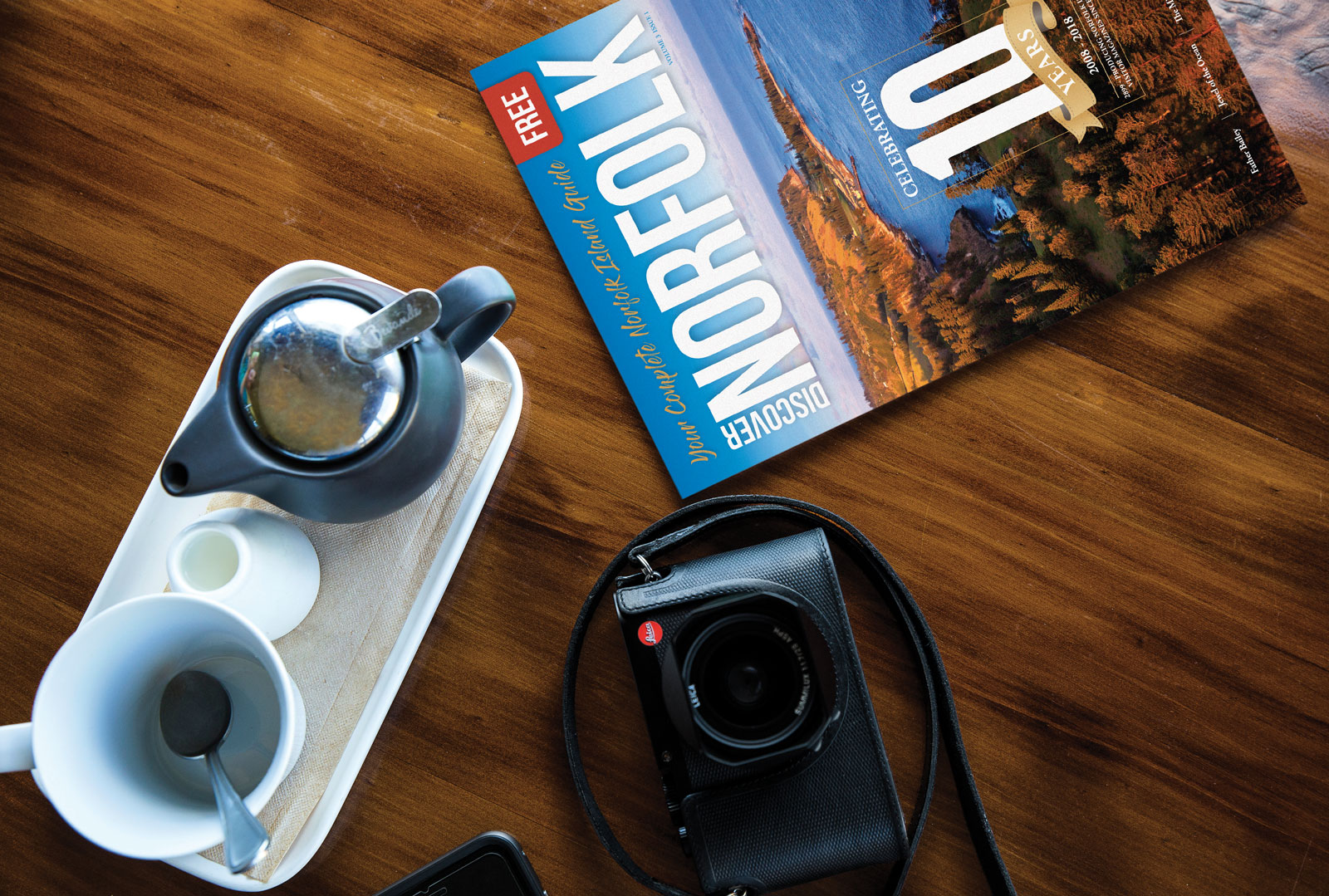Home » All Articles » Island Homes: Chimney Valley (Re-visited)
Island Homes: Chimney Valley (Re-visited)

Some island residents refer to Norfolk’s cool and shady valleys as “forgotten places”. These valleys were quite important to people from our parents and grandparents generations, particularly those who lived off their land. The valleys were the source of wells and springs, which provided water for the garden, crops, stock and the homestead. The moist and fertile soil was ideal for planting bananas and fruit trees. The womenfolk would go the valleys to gather rushes, lilies or taro. After the rain, children would play in pools that they made by damming the water. In the days before subdivisions, boundary fences and modern vehicles, island residents frequently took shortcuts on foot or on horseback to visit relatives or friends, criss-crossing the valleys, or following creek beds.
One such valley was Chimney Valley, which was “at the bottom of the garden” of nearly everyone who lived along the downhill section of Taylor’s Road, the present Queen Elizabeth Avenue, and the top part of Middlegate (“Store”) Road. The name came from an old chimney that once stood there, the remnant of a cottage built by a settler in convict times.
Today, cars and homes hug the ridges, and many of the valleys are unfamiliar and rarely visited. However, the name “Chimney Valley” has, happily, been given new life through Simon and Louise Bigg’s house. Nearly 40 years ago, Simon’s parents Archie and Celia bought 13 acres in Chimney Valley, and used it for growing and grazing. Much later when Simon and Louise were married and started their family, Simon’s parents gave them the land to build their family home.
The house was a long time in the planning. There were initial bureaucratic difficulties, but the delays enabled them to give a great deal of thought to what they wanted. A site was hollowed out of the hillside so that the building would nestle into the landscape. Two pines were felled from the property, and over a period of time, Simon asked Christian’s Mill to set aside the best and strongest timbers.
Their builder friend, Chris, was in tune with the Bigg’s vision for something that reflected Norfolk’s environment and way of life. He helped them draw up a design that would be flexible and suit their needs for many years, without the need for much in the way of repairs, upgrades or additions. They also ensured that it was sited to make the most of the light and the magnificent view.
The first priority was a well-equipped “Smoko Shed”, which was essential for a happy workplace and job satisfaction. The spirit of hospitality has been there right from the start!
The actual work on the house began in March 2002. A number of their friends helped out on the building team. Just two weeks later, Simon and Louise’s fourth child arrived. At that stage, only the bearers and joists were in place. Simon will never forget coming back from the hospital that afternoon to the amazing and heartwarming sight of all the walls of the front half of the house standing in place — and this was on a weekend! The spirit of friendship and cooperation is well and truly a part of the fabric of the Chimney Valley homestead.
The walls of the home were built in a board-and-batten style with thick undressed timbers. It has all been hand-nailed in the traditional way, and uses solid beams rather than trusses. The doors and windows are framed in timber, in keeping with old Norfolk dwellings.
There is no front door. Instead, a beautiful stable door, inspired by those they saw in some Mews Cottages in England, takes you from the side verandah straight into a large kitchen/dining/living area, filled with an eclectic mixture of family treasures, children’s sporting trophies, fascinating bric-a-brac, and mementoes of travels. The kitchen, with its solid timber benches, curtain-fronted cupboards, and a French Provincial sink — another inspiration from their travels — is definitely the hub of the house. Simon says that he is never happier than when the kitchen is filled to the brim with people chatting, eating, enjoying a cup of tea, going to the fridge, helping with the food preparation or just enjoying the atmosphere or the view.
The Biggs insist that their home is a “working house,” a place that will stand up to the knocks and bumps of daily family life. That is not to say that it is rough and ready. You only have to look at those floorboards, fashioned from the hand-picked timbers, without a single knot visible. A great deal of local Norfolk timber has been used in the joinery, but it is not overwhelming.
The house feels solid and rooted, as if it has a history that goes back well beyond seven years. Indeed there are many features and items throughout that tell a story. Pieces of furniture that have been rescued from sheds and garage sales have been lovingly restored to function, but still retain the patina of age and marks of years of use. Hats and baskets plaited and woven by Simon’s beloved grandmother, Beattie, have pride of place on the wall. Old sits comfortably with new. The “new” includes five greenwood Windsor chairs painstakingly handcrafted by Simon in workshops, using timeless traditional methods. They will be the heirlooms of the future!
There are just so many places to sit and make yourself at home, both inside and on the verandahs. A number of dining settings accommodate up to 36 tourists who have the privilege of being guests at “Chimney Valley for a course of a progressive dinner. These visitors are delighted to experience the warm family atmosphere of a place that many say is “not just a house, but a home!”
Last year, the rear verandahs were glassed in with enormous timber framed windows and doors, for year-round enjoyment of these areas. They have become a generous extension of the living space, at the same time providing a seamless connection with the garden outside and the panoramic vista beyond.
Family members are not only kings in their castle, but they have a grandstand view of so much that is happening on the island. The planes come in to land almost at eye level, and to the south, you can watch the fishing boats heading out to sea, and the unloading of the cargo ships. Looking across Chimney Valley, cattle and sheep can be seen grazing on the hillsides. It is possible to follow vehicles snaking their way up Country Road or along the ridges at Beefsteak or Channer’s Corner. One realises how close these places are if you follow the valleys, as our grandparents did, and not the roads.
This is an environment and landscape that was very much part of the lives of our forefathers, who lived and farmed simply and sustainably, and enjoyed the rich bounty that this island, with its fertile volcanic soils, has to offer. Simon is very conscious of this heritage, and is now a partner in “Sustainable Norfolk”, an organisation that has been set up to promote the skills, knowledge and care that will enable Norfolk Island to continue to meet the basic needs of its people into the future. He is putting his philosophy into practice right here in Chimney Valley. There is even a house cow providing more rich creamy milk than this family of six can use.
The Biggs love this island and their own little portion of it. “We want our kids to love it too,” says Louise. “They should feel that they belong and do not need to leave. Just like our island, a home should provide everything important to our well-being — not just physical needs but also things like security, love, warmth and welcome.”
Image Credit: Robin Nisbet
www.robinnisbet.com
____
Article content disclaimer: Article first published in 2899 Magazine V1 Iss3, 2009. Please note that details of specific travel, accommodation and touring options may be outdated. References to people, places and businesses, including operating days and times may be have changed. References to Government structure and Government businesses/entities may no longer be applicable. Please check directly with businesses and/or Government websites directly rather than relying on any information contained in this article before you make travel arrangements.



